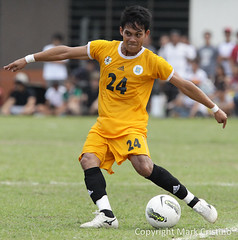The concept of one-to-one correspondence requires two skills: (1) matching pairs and (2) comparing sets. Matching places two like items together as a pair while comparing determines which set has more or less. In these projects, the key is to focus on the language, emphasizing mathematical terms.

Books to Read
The following books teach one-to-one correspondence using stories. I love the impact a story has on understanding, and these books do a great job of packaging the mathematical ideas in a way that young children can comprehend.
English Football Results
Two of Everything: A Chinese Folk Tale by Lily Toy Hong
Knots on a Counting Rope by Bill Martin Jr. and John Archambault
Seaweed Soup by Stuart J. Murphy
A Pair of Socks by Stuart J. Murphy
Missing Mittens by Stuart J. Murphy
Monster Musical Chairs by Stuart J. Murphy
Just Enough Carrots by Stuart J. Murphy
Some Things Go Together by Charlotte Zolotow
Projects to Learn Matching
Project #1
Take opportunity to point out situations where there is a matching set. Word emphasis: match, even, pair, each.
There are three cups and three straws. It is even. Three children and three cookies. It is a match! A pair of socks for your feet. One foot for each sock, and one sock for each foot.
Project #2
Provide the following items and allow the children to sort into pairs. Word emphasis: pair, match.
1 ice cube tray
2 screws
2 washers
2 electrical circuit binders
2 matching butterfly clips
2 matching hair pins
2 pennies
2 matching buttons
Project #3
Have a tea party with stuffed bears. Set one place setting for each bear. You could say, "One seat for each bear, and one bear for each seat." Word emphasis: each.
Project #4
Serve a lunch with matching shapes to make their own snacks. I used cookie cutters to cut the bread, cheese, and lunch meat into matching shapes. I provided at least two different shapes so that they would have to find the match in order to build their sandwiches. Word emphasis: match.
Project #5
Play the memory game. Word emphasis: pair, match.
Projects to Learn Comparing
Project #1
Take opportunity to point out situations where there is not enough or there is too much to go around. Word emphasis: more, less, fewer, even.
Oops, I grabbed one straw too many. There are three cups and four straws. There are more straws than cups. We have six chairs at our table, but only four people in the family sitting at the table. That leaves two empty chairs because there are more chairs than people. Today we have company, so we have eight people and only six chairs. We have fewer chairs than people, so we will need two more chairs. Three children and four cookies. There are more cookies. If I eat one, it will be even.
Project #2
Invite the children to collect toys to put inside two hula hoops. Then count to see which hula hoop has more toys and which has fewer. Ask, "Which set of toys has more? Which set has fewer?" Word emphasis: set, more, fewer, even.
Project #3
Pour two cups of water and compare the volume. Which cup has more? Which has less? Word emphasis: more, less, even.
Project #4
Make sugar cookies and put chocolate chips on the frosting. Compare two cookies to see which has more chocolate chips. For an added lesson, determine how many chocolate chips need to be added to make them even. Word emphasis: more, fewer, even.
0 ความคิดเห็น:
แสดงความคิดเห็น